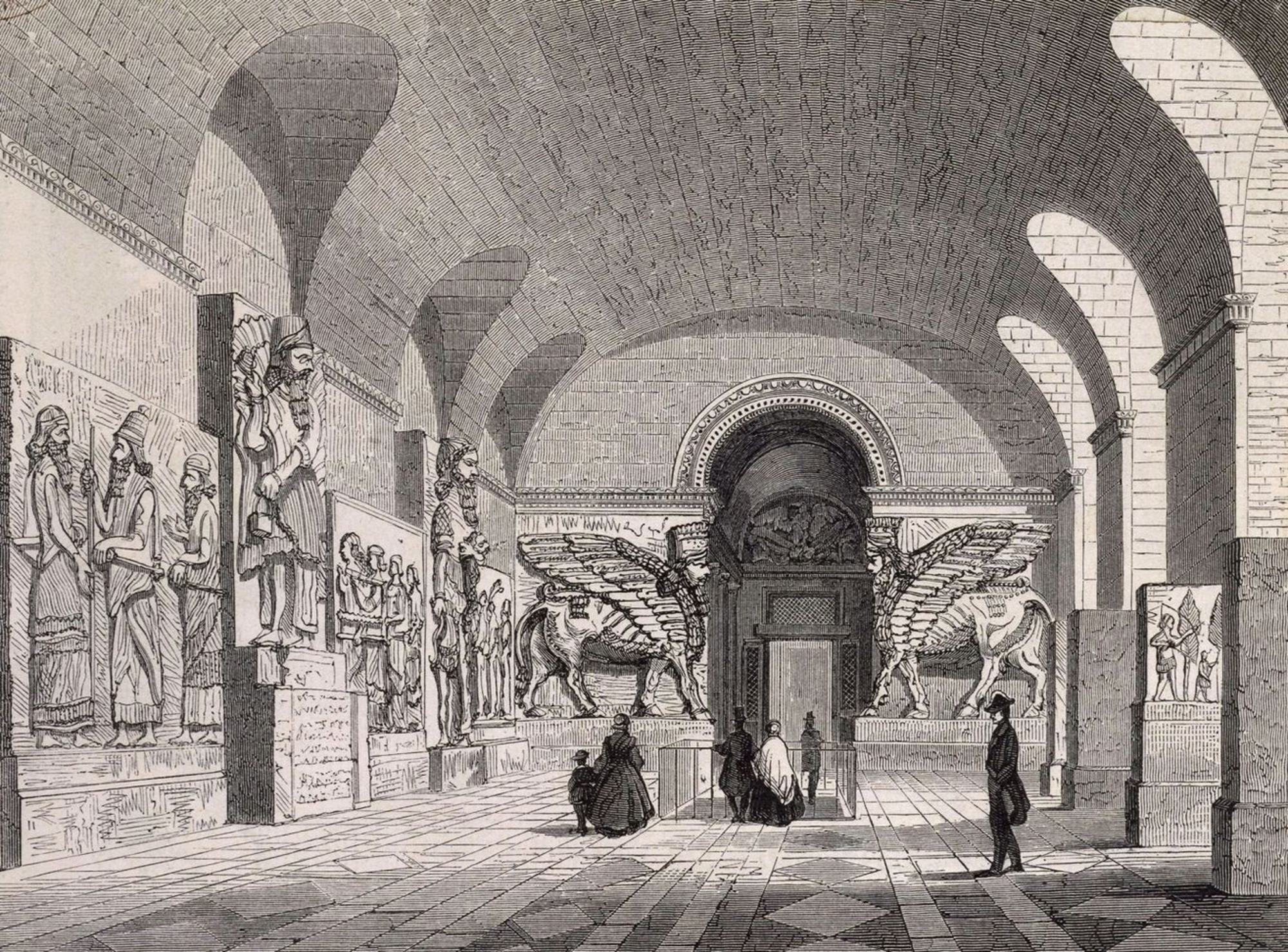
- Home
- Transporting the remains
Shipping the reliefs
The difficulty of transporting the carved reliefs, and especially the bulls, arose as early as the construction of Khorsabad during the reign of Sargon had begun. More than 4 metres high, they sometimes weighed up to 30 tonnes. Paul-Émile Botta decided to have them sawn into sections to make them easier to transport, but Victor Place refused, and he had to build heavy-duty carts and prepare a road to move them to the river.
River convoy
The finds were then loaded onto keleks, large rafts floating on hundreds of air-filled animal skins to prevent them sinking under the weight of their load. These rafts, used widely in Iraq since antiquity, floated down the Tigris with the current and were unloaded in Basra, at Shatt-el Arab, where the convoy was loaded onto ships from Brest (Le Cormoran) and Nantes (Le Manuel).
Maritime transport
In 1846, Le Cormoran was loaded with finds selected by Paul-Émile Botta. As the ship had to sail around Madagascar and the Cape of Good Hope, it would take several months to reach France. Unloaded in Le Havre, the convoy was transported by barge to Paris and reached the Louvre three years after the end of Paul-Émile Botta's excavations. It also took Le Manuel a year to transport the finds from Victor Place’s convoy to Le Havre.
”Although we do not known for sure who he is - Nebuchadnezzar, Sardanapalus, perhaps Ninus himself - the Assyrian monarch has finally set foot on the bank of the Seine. He was destined for a new residence, more worthy of him, the palace of our kings; the Louvre welcomed him with doors wide open." /p>
(L’Illustration, 15 May 1847)
Associated media
Open Media Library
